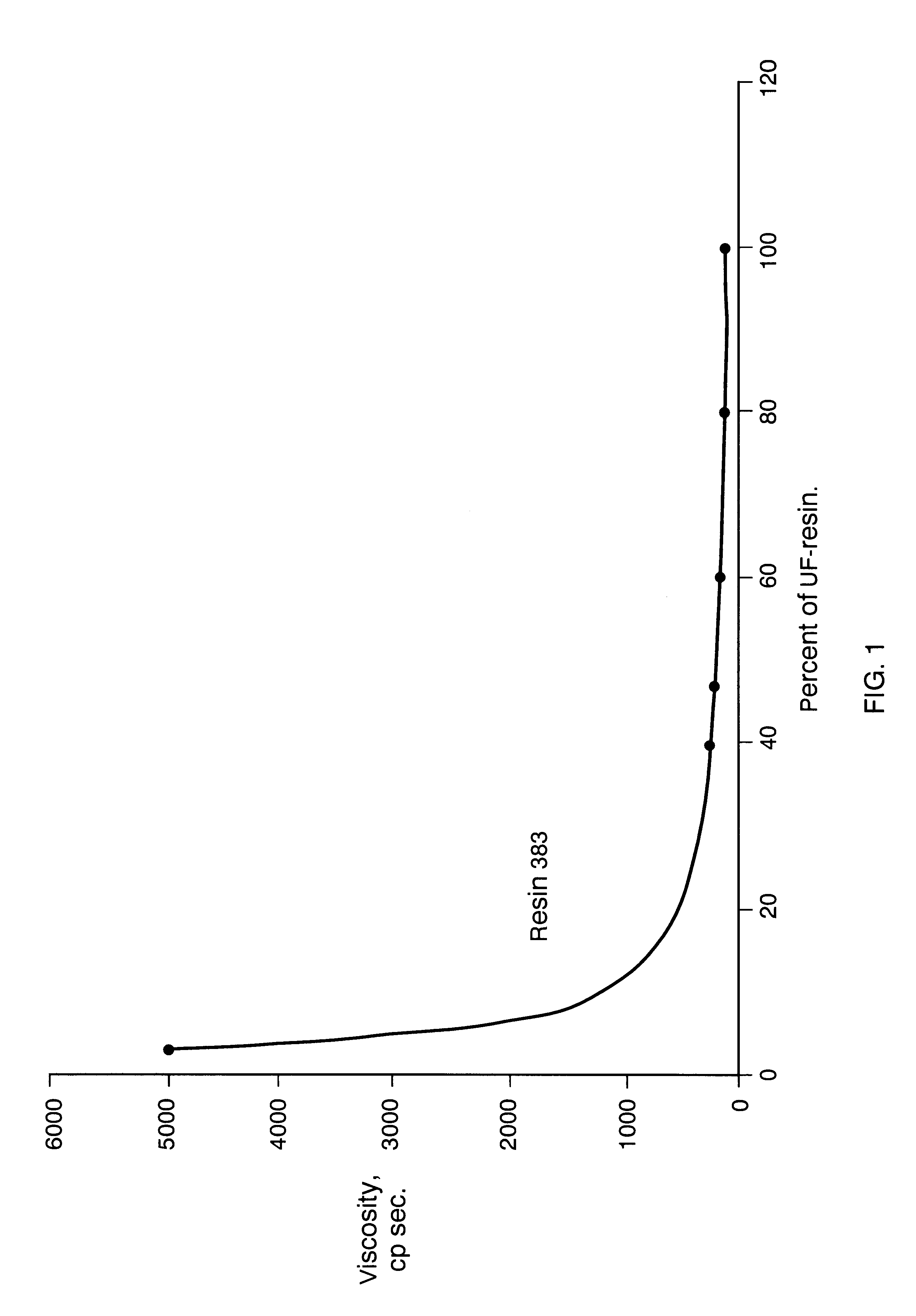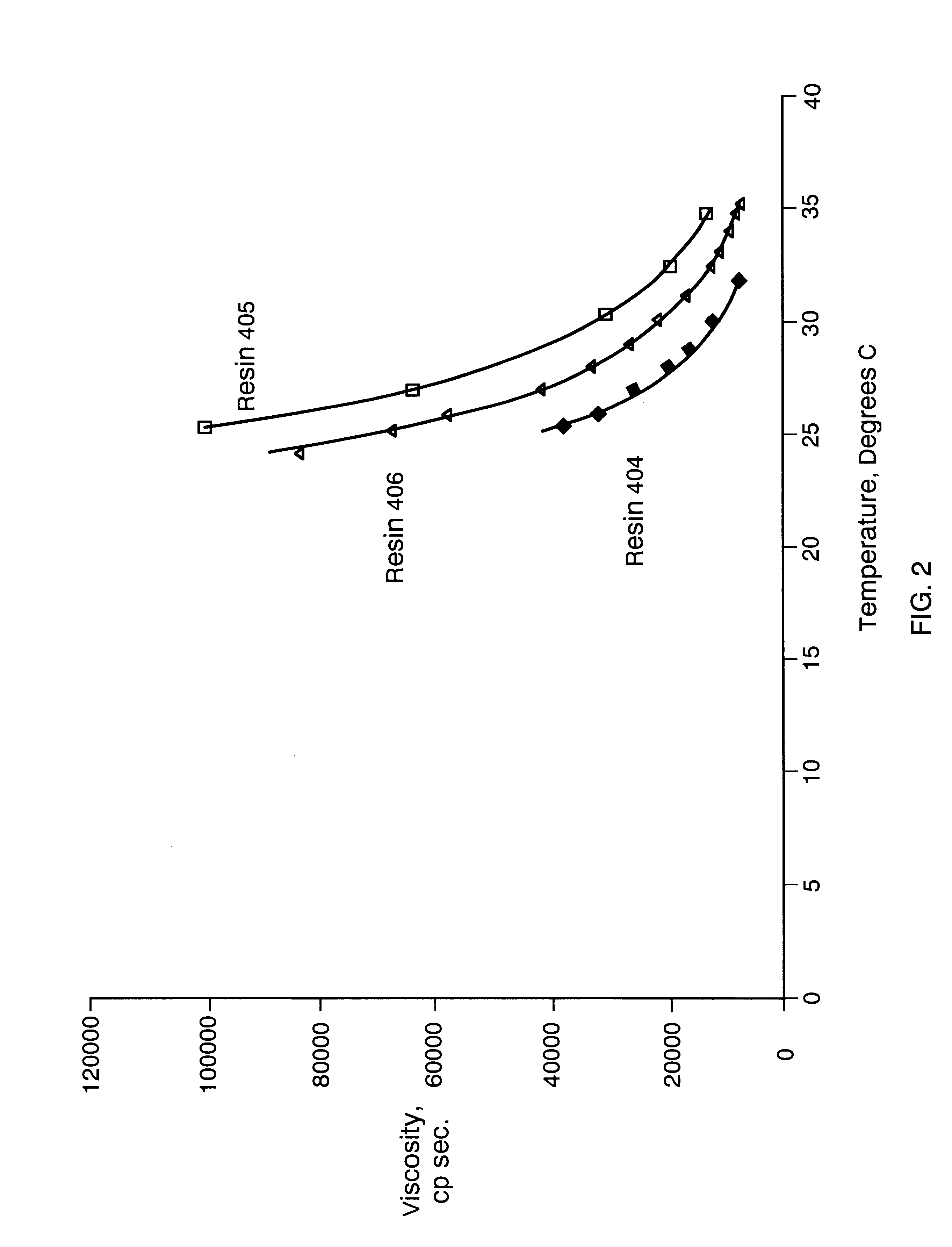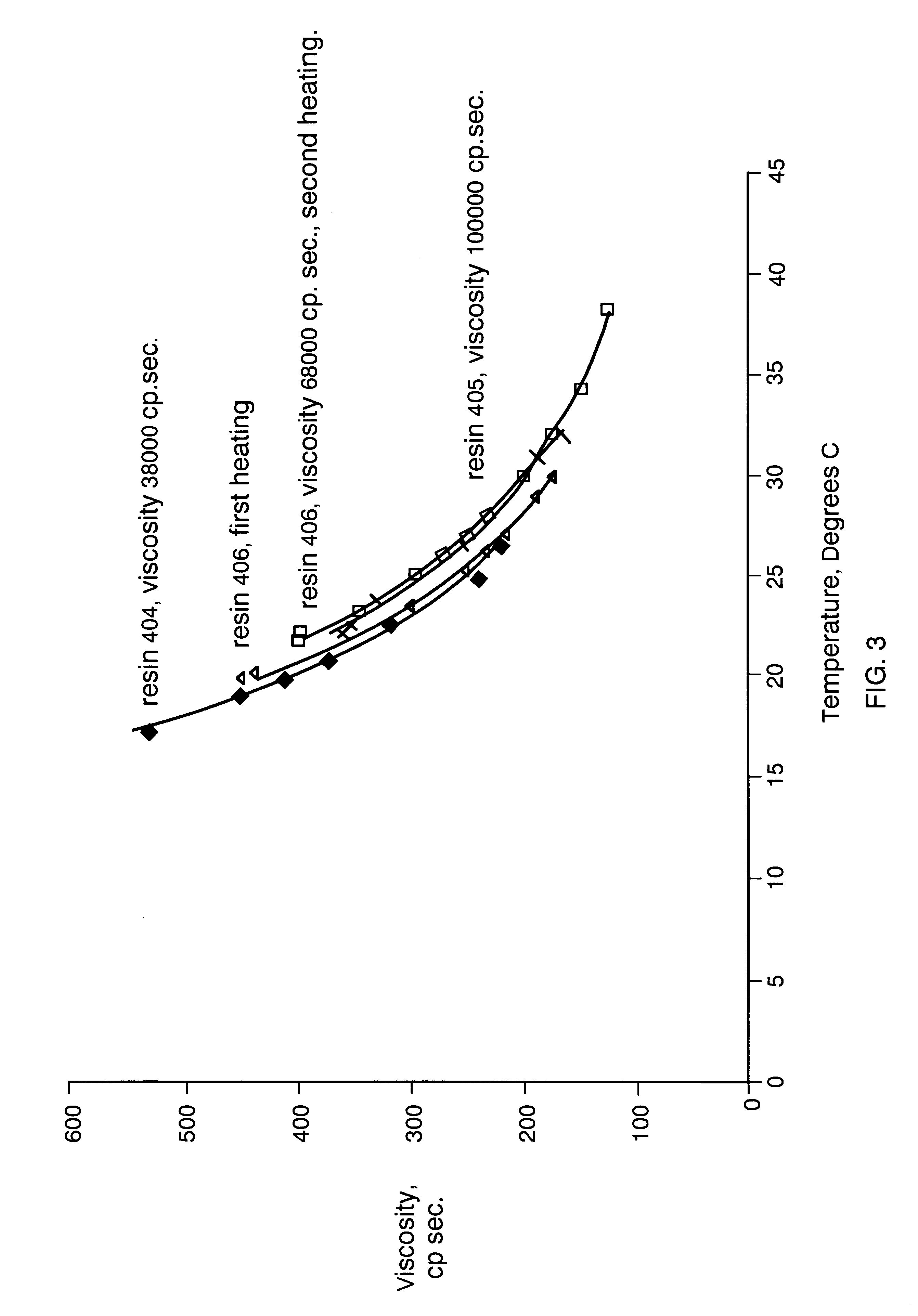Composition board binding material
- Summary
- Abstract
- Description
- Claims
- Application Information
AI Technical Summary
Benefits of technology
Problems solved by technology
Method used
Image
Examples
example 1
(Resin number 403)
240 g of ammonium lignosulfonate from ethyl alcohol fermentation (51.5% solids, pH of 4.3 at 25 degrees C., viscosity of 1225 cps at 25 degrees C., and free nitrogen of 0.13% based on solids) were introduced into a reactor (three neck flask provided with stirrer, thermometer and condenser). 10 g of a 50% NaOH solution, and several crystals FeCl.sub.2 were added and dissolved in the liquid over 15 min. at room temperature. Then 2.5 g (2.1 weight %) acrolein (2-Propenal) was added and mixed for 10 min., still at room temperature. After that .about.1 ml 30% hydrogen peroxide was added and an exothermic reaction was observed; the temperature increased by about 5-10 degrees C. The mixture was kept at 30 degrees C. for 3 hours, with stirring. During this time, about 0.5 ml hydrogen peroxide was added twice over the course of the first hour. Then 20 g of the 50% NaOH solution was added.
A strong exothermic reaction was observed, in which the temperature increased to about ...
example 2
(Resin number 411)
The resin was synthesized under the same conditions as in example 1, but with the steps reversed, i.e., the methylolation (reaction with formaldehyde) was carried out first, and after that the resulting reaction product underwent the radical reaction with the unsaturated aldehyde acrolein. The results are shown in tables 1 and 2.
example 3
(Resin number 401)
The resin was synthesized under the same conditions as in example 1, but the quantity of acrolein was decreased from 2.5 g to 0.42 g. The product had properties very close to methylolated lignosulfonate not reacted with acrolein. In another case (not shown in the tables), 12 g acrolein was used, but the resulting resin had a very short useful lifetime, and consequently could not be used in the standard particleboard production processes. The results are shown in tables 3 and 4.
PUM
| Property | Measurement | Unit |
|---|---|---|
| Fraction | aaaaa | aaaaa |
| Percent by mass | aaaaa | aaaaa |
| Percent by mass | aaaaa | aaaaa |
Abstract
Description
Claims
Application Information
 Login to View More
Login to View More - R&D
- Intellectual Property
- Life Sciences
- Materials
- Tech Scout
- Unparalleled Data Quality
- Higher Quality Content
- 60% Fewer Hallucinations
Browse by: Latest US Patents, China's latest patents, Technical Efficacy Thesaurus, Application Domain, Technology Topic, Popular Technical Reports.
© 2025 PatSnap. All rights reserved.Legal|Privacy policy|Modern Slavery Act Transparency Statement|Sitemap|About US| Contact US: help@patsnap.com



